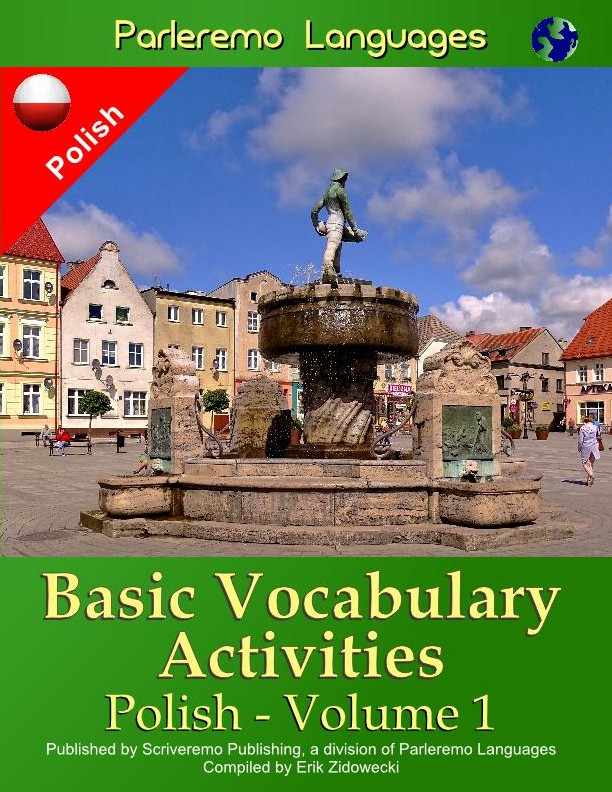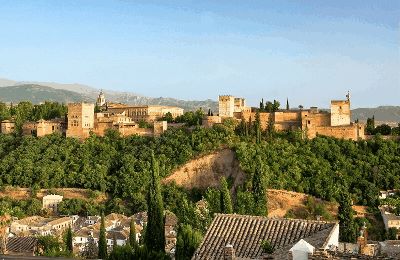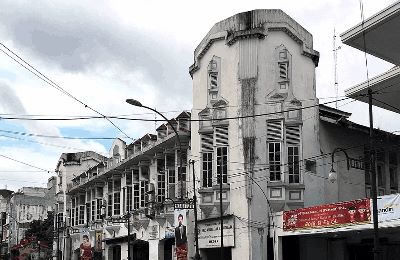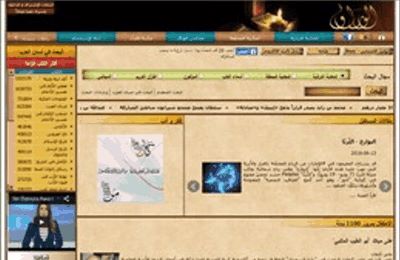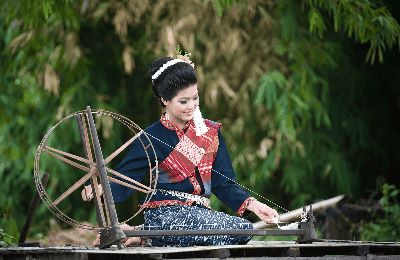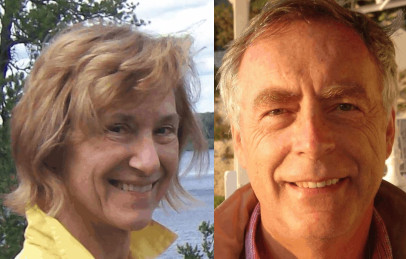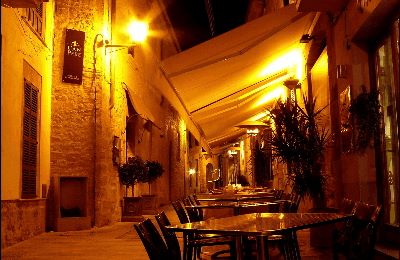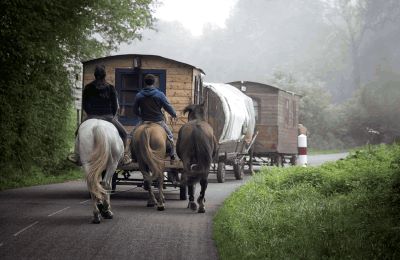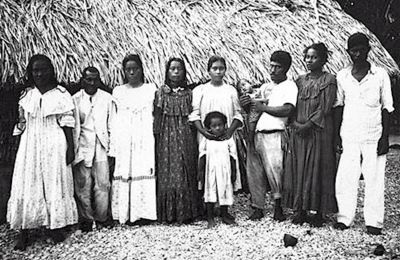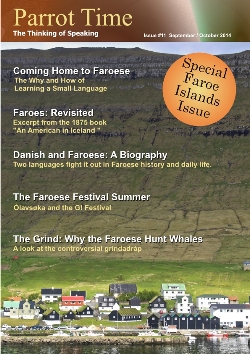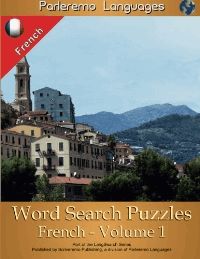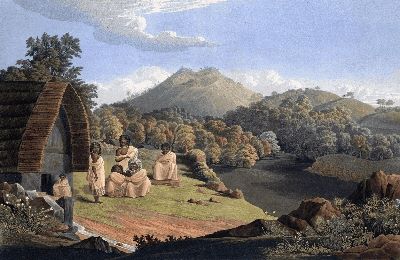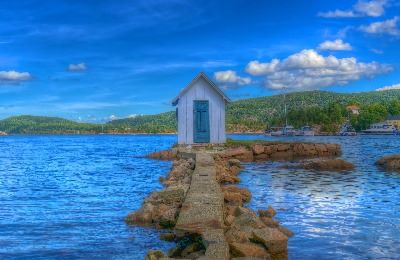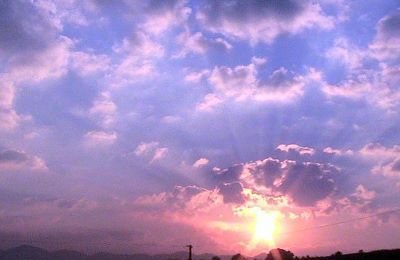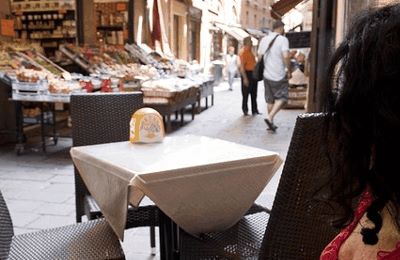Revisited
Early Bardic Literature in Ireland

|
Editor’s note: This article is an exerpt from "Early Bardic Literature, Ireland" By Standish O'Grady. It was originally published in 1879. 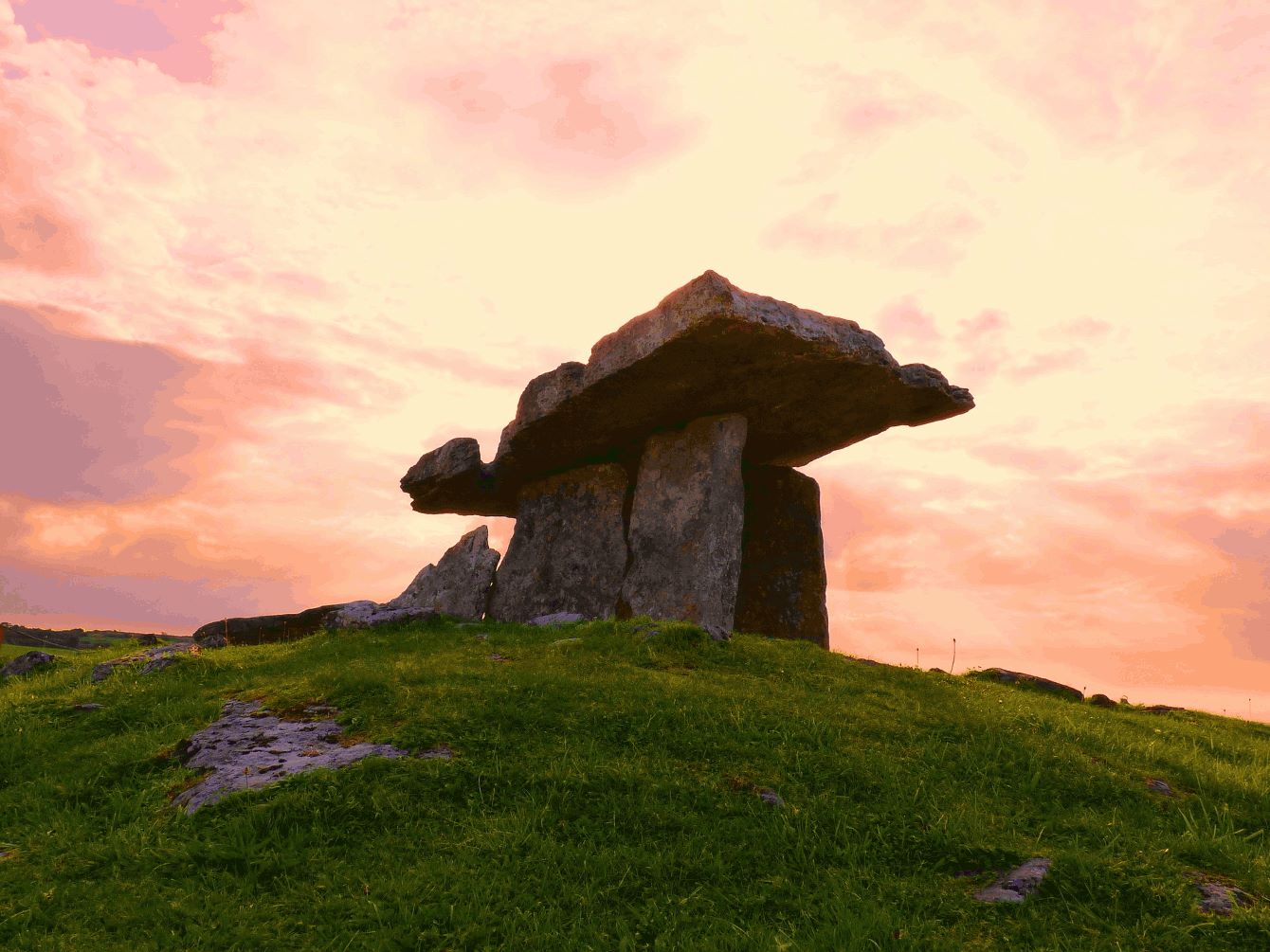 This dolmen sits with a mystic glow on the hill. Dolmen's are megalithic tombs with a large flat stone laid on upright ones, mainly found in Britain and France Scattered over the surface of every country in Europe may be found sepulchral monuments, the remains of pre-historic times and nations, and of a phase of life will civilisation which has long since passed away. No country in Europe is without its cromlechs and dolmens, huge earthen tumuli, great flagged sepulchres, and enclosures of tall pillar-stones. The men by whom these works were made, so interesting in themselves, and so different from anything of the kind erected since, were not strangers and aliens, but our own ancestors, and out of their rude civilisation our own has slowly grown. Of that elder phase of European civilisation no record or tradition has been anywhere bequeathed to us. Of its nature, and the ideas and sentiments whereby it was sustained, nought may now be learned save by an examination of those tombs themselves, and of the dumb remnants, from time to time exhumed out of their soil - rude instruments of clay, flint, brass, and gold, and by speculations and reasonings founded upon these archaeological gleanings, meagre and sapless. 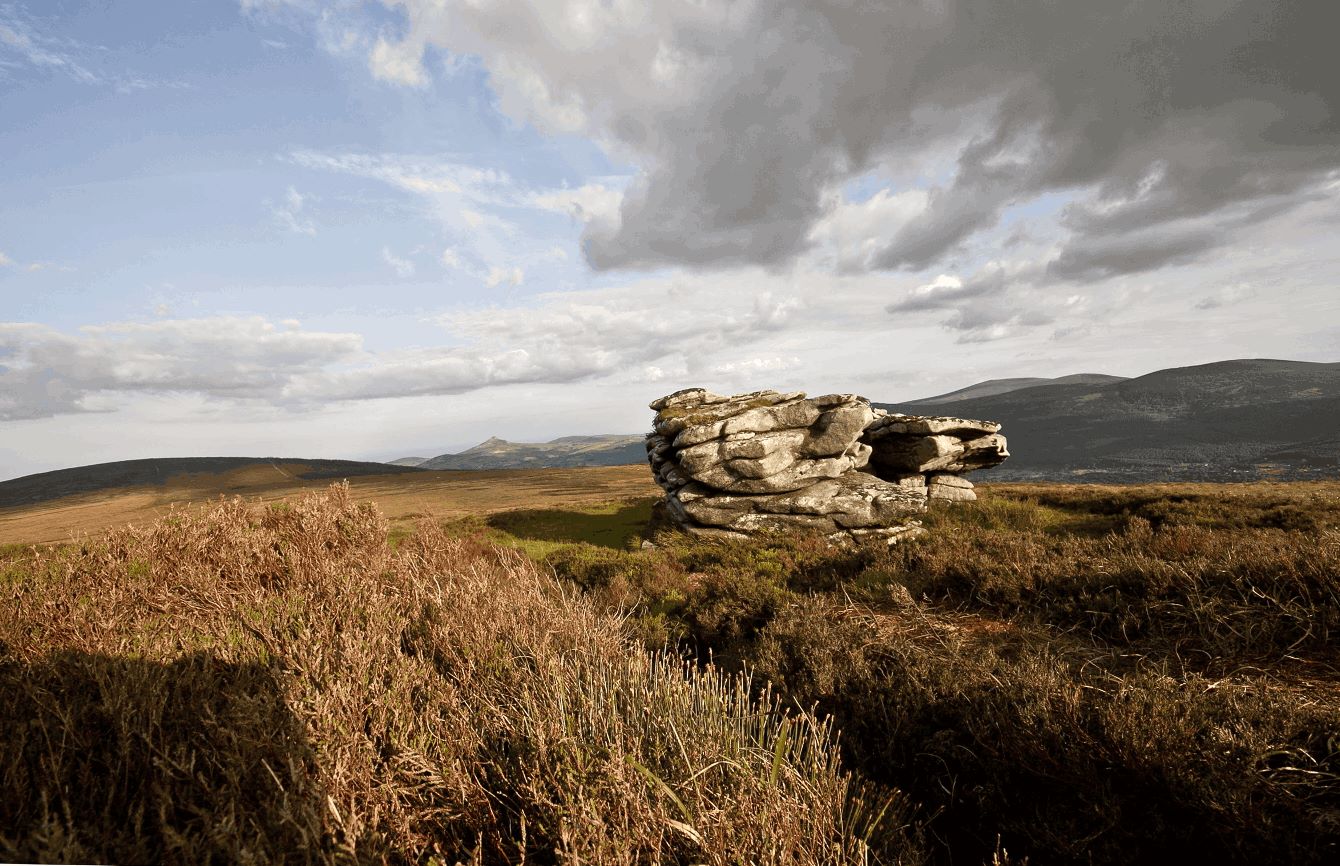 Remains of ruins in the mountains of Glencullen, Ireland For after the explorer has broken up, certainly desecrated, and perhaps destroyed, those noble sepulchral raths; after he has disinterred the bones laid there once by pious hands, and the urn with its unrecognisable ashes of king or warrior, and by the industrious labour of years hoarded his fruitless treasure of stone celt and arrow-head, of brazen sword and gold fibula and torque; and after the savant has rammed many skulls with sawdust, measuring their capacity, and has adorned them with some obscure label, and has tabulated and arranged the implements and decorations of flint and metal in the glazed cases of the cold gaunt museum, the imagination, unsatisfied and revolted, shrinks back from all that he has done. Still we continue to inquire, receiving from him no adequate response, Who were those ancient chieftains and warriors for whom an affectionate people raised those strange tombs? What life did they lead? What deeds perform? How did their personality affect the minds of their people and posterity? How did our ancestors look upon those great tombs, certainly not reared to be forgotten, and how did they - those huge monumental pebbles and swelling raths - enter into and affect the civilisation or religion of the times?  Part of what remains of Kinbane Castle in Northern Ireland We see the cromlech with its massive slab and immense supporting pillars, but we vainly endeavour to imagine for whom it was first erected, and how that greater than cyclopean house affected the minds of those who made it, or those who were reared in its neighbourhood or within reach of its influence. We see the stone cist with its great smooth flags, the rocky cairn, and huge barrow and massive walled cathair, but the interest which they invariably excite is only aroused to subside again unsatisfied. From this department of European antiquities the historian retires baffled, and the dry savant is alone master of the field, but a field which, as cultivated by him alone, remains barren or fertile only in things the reverse of exhilarating. An antiquarian museum is more melancholy than a tomb. In the rest of Europe there is not a single barrow, dolmen, or cist of which the ancient traditional history is recorded; in Ireland there is hardly one of which it is not. But there is one country in Europe in which, by virtue of a marvellous strength and tenacity of the historical intellect, and of filial devotedness to the memory of their ancestors, there have been preserved down into the early phases of mediaeval civilisation, and then committed to the sure guardianship of manuscript, the hymns, ballads, stories, and chronicles, the names, pedigrees, achievements, and even characters, of those ancient kings and warriors over whom those massive cromlechs were erected and great cairns piled. There is not a conspicuous sepulchral monument in Ireland, the traditional history of which is not recorded in our ancient literature, and of the heroes in whose honour they were raised. In the rest of Europe there is not a single barrow, dolmen, or cist of which the ancient traditional history is recorded; in Ireland there is hardly one of which it is not. And these histories are in many cases as rich and circumstantial as that of men of the greatest eminence who have lived in modern times. Granted that the imagination which for centuries followed with eager interest the lives of these heroes, beheld as gigantic what was not so, as romantic and heroic what was neither one nor the other, still the great fact remains, that it was beside and in connection with the mounds and cairns that this history was elaborated, and elaborated concerning them and concerning the heroes to whom they were sacred. 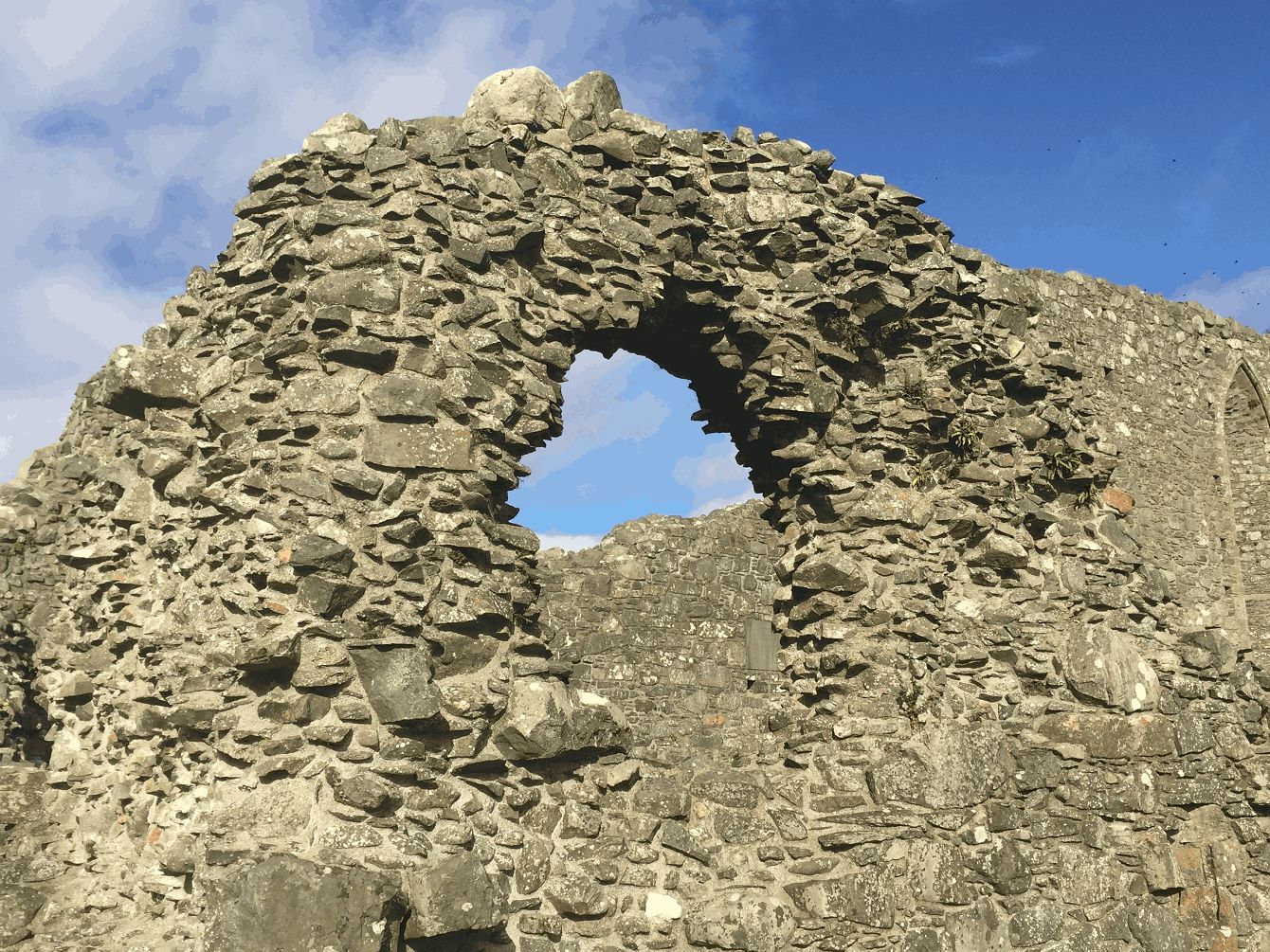 Stone arch in ruins that probably once acted as a window On the plain of Tara, beside the little stream Nemanna, itself famous as that which first turned a mill-wheel in Ireland, there lies a barrow, not itself very conspicuous in the midst of others, all named and illustrious in the ancient literature of the country. The ancient hero there interred is to the student of the Irish bardic literature a figure as familiar and clearly seen as any personage in the Biographia Britannica. We know the name he bore as a boy and the name he bore as a man. We know the names of his father and his grandfather, and of the father of his grandfather, of his mother, and the father and mother of his mother, and the pedigrees and histories of each of these. We know the name of his nurse, and of his children, and of his wife, and the character of his wife, and of the father and mother of his wife, and where they lived and were buried. We know all the striking events of his boyhood and manhood, the names of his horses and his weapons, his own character and his friends, male and female. We know his battles, and the names of those whom he slew in battle, and how he was himself slain, and by whose hands. We know his physical and spiritual characteristics, the device upon his shield, and how that was originated, carved, and painted, by whom. We know the colour of his hair, the date of his birth and of his death, and his relations, in time and otherwise, with the remainder of the princes and warriors with whom, in that mound-raising period of our history, he was connected, in hostility or friendship; and all this enshrined in ancient song, the transmitted traditions of the people who raised that barrow, and who laid within it sorrowing their brave ruler and, defender. That mound is the tomb of Cuculain, once king of the district in which Dundalk stands to-day, and the ruins of whose earthen fortification may still be seen two miles from that town. The English farmer may tear down the barrow which is unfortunate enough to be situated within his bounds. Neither he nor his neighbours know or can tell anything about its ancient history; the removed earth will help to make his cattle fatter and improve his crops, the stones will be useful to pave his roads and build his fences, and the savant can enjoy the rest; but the Irish farmer and landlord should not do or suffer this. This is a single instance, and used merely as an example, but one out of a multitude almost as striking. There is not a king of Ireland, described as such in the ancient annals, whose barrow is not mentioned in these or other compositions, and every one of which may at the present day be identified where the ignorant plebeian or the ignorant patrician has not destroyed them. The early History of Ireland clings around and grows out of the Irish barrows until, with almost the universality of that primeval forest from which Ireland took one of its ancient names, the whole isle and all within it was clothed with a nobler raiment, invisible, but not the less real, of a full and luxuriant history, from whose presence, all-embracing, no part was free. Of the many poetical and rhetorical titles lavished upon this country, none is truer than that which calls her the Isle of Song. Her ancient history passed unceasingly into the realm of artistic representation; the history of one generation became the poetry of the next, until the whole island was illuminated and coloured by the poetry of the bards. Productions of mere fancy and imagination these songs are not, though fancy and imagination may have coloured and shaped all their subject-matter, but the names are names of men and women who once lived and died in Ireland, and over whom their people raised the swelling rath and reared the rocky cromlech. In the sepulchral monuments their names were preserved, and in the performance of sacred rites, and the holding of games, fairs, and assemblies in their honour, the memory of their achievements kept fresh, till the traditions that clung around these places were inshrined in tales which were finally incorporated in the Leabhar na Huidhré and the Book of Leinster. 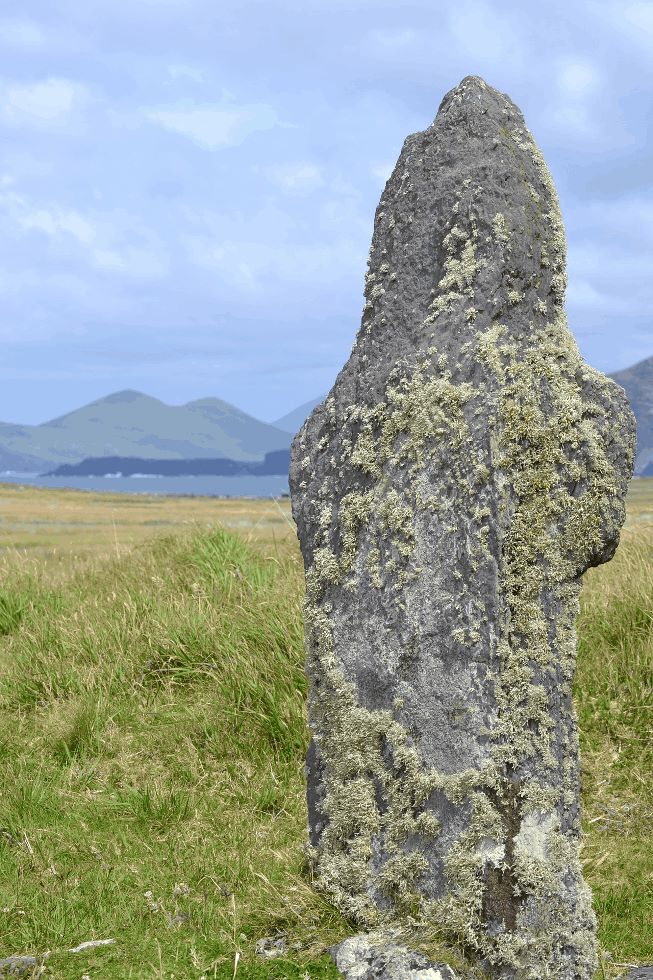 Single standing stone, perhaps once a marker Pre-historic narrative is of two kinds - in one the imagination is at work consciously, in the other unconsciously. Legends of the former class are the product of a lettered and learned age. The story floats loosely in a world of imagination. The other sort of pre-historic narrative clings close to the soil, and to visible and tangible objects. It may be legend, but it is legend believed in as history never consciously invented, and growing out of certain spots of the earth's surface, and supported by and drawing its life from the soil like a natural growth. Such are the early Irish tales that cling around the mounds and cromlechs as that by which they are sustained, which was originally their source, and sustained them afterwards in a strong enduring life. It is evident that these cannot be classed with stories that float vaguely in an ideal world, which may happen in one place as well as another, and in which the names might be disarrayed without changing the character and consistency of the tale, and its relations, in time or otherwise, with other tales. 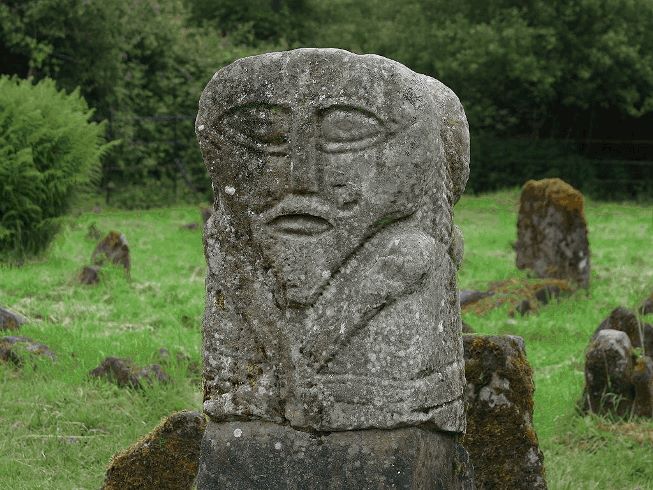 Stone statue, historically found at places of worship Foreigners are surprised to find the Irish claim for their own country an antiquity and a history prior to that of the neighbouring countries. Herein lie the proof and the explanation. The traditions and history of the mound-raising period have in other countries passed away. Foreign conquest, or less intrinsic force of imagination, and pious sentiment have suffered them to fall into oblivion; but in Ireland they have been all preserved in their original fulness and vigour, hardly a hue has faded, hardly a minute circumstance or articulation been suffered to decay. |
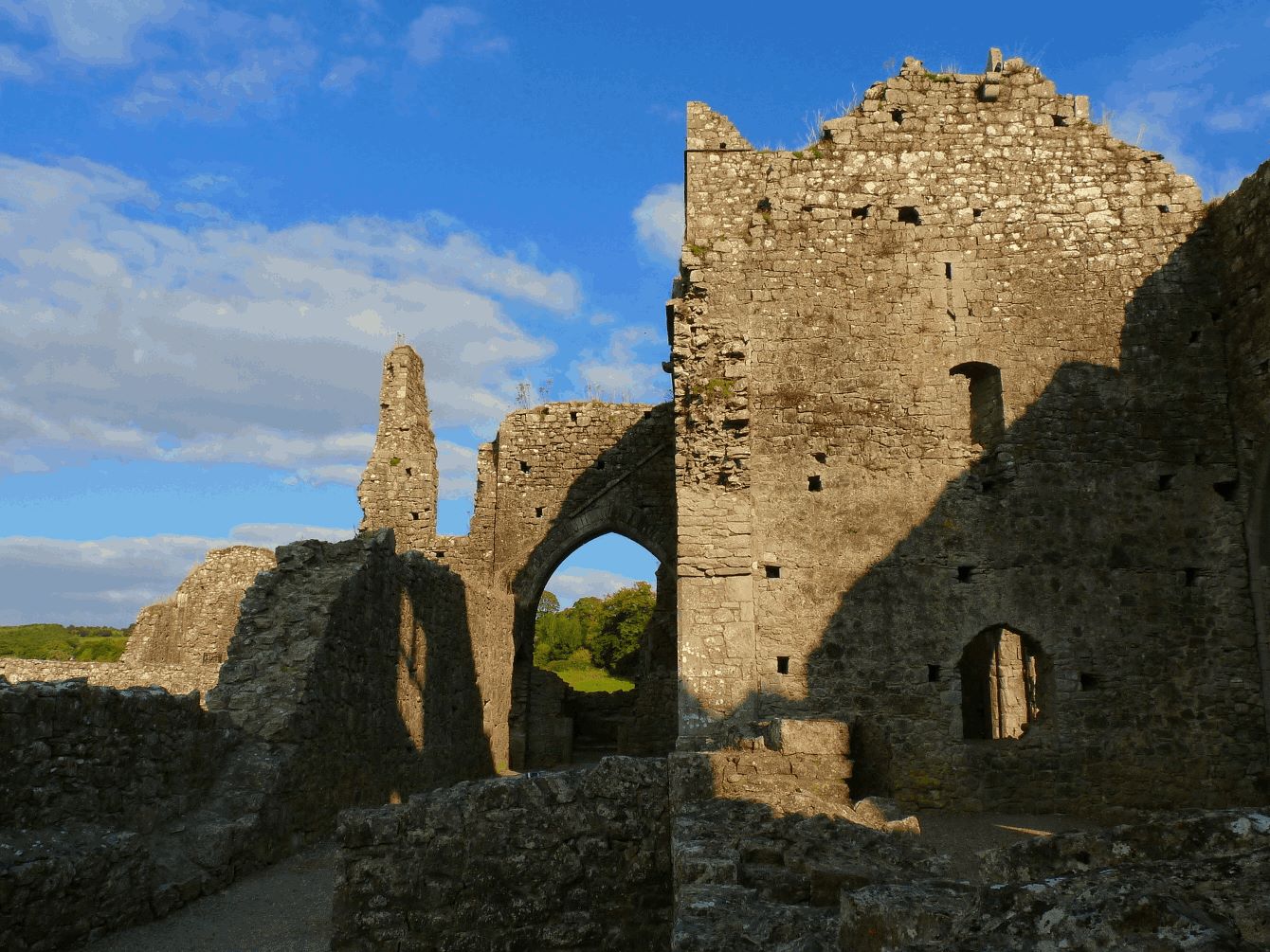 Ruins of a monastery or abbey The enthusiasm with which the Irish intellect seized upon the grand moral life of Christianity, and ideals so different from, and so hostile to, those of the heroic age, did not consume the traditions or destroy the pious and reverent spirit in which men still looked back upon those monuments of their own pagan teachers and kings, and the deep spirit of patriotism and affection with which the mind still clung to the old heroic age, whose types were warlike prowess, physical beauty, generosity, hospitality, love of family and nation, and all those noble attributes which constituted the heroic character as distinguished from the saintly. The Danish conquest, with its profound modification of Irish society, and consequent disruption of old habits and conditions of life, did not dissipate it; nor the more dangerous conquest of the Normans, with their own innate nobility of character, chivalrous daring, and continental grace and civilisation; nor the Elizabethan convulsions and systematic repression and destruction of all native phases of thought and feeling. Through all these storms, which successively assailed the heroic literature of ancient Ireland, it still held itself undestroyed. There were still found generous minds to shelter and shield the old tales and ballads, to feel the nobleness of that life of which they were the outcome, and to resolve that the soil of Ireland should not, so far as they had the power to prevent it, be denuded of its raiment of history and historic romance, or reduced again to primeval nakedness. The fruit of this persistency and unquenched love of country and its ancient traditions, is left to be enjoyed by us. There is not through the length and breadth of the country a conspicuous rath or barrow of which we cannot find the traditional history preserved in this ancient literature. The mounds of Tara, the great barrows along the shores of the Boyne, the raths of Slieve Mish, and Rathcrogan, and Teltown, the stone caiseals of Aran and Innishowen, and those that alone or in smaller groups stud the country over, are all, or nearly all, mentioned in this ancient literature, with the names and traditional histories of those over whom they were raised. There is one thing to be learned from all this, which is, that we, at least, should not suffer these ancient monuments to be destroyed, whose history has been thus so astonishingly preserved. The English farmer may tear down the barrow which is unfortunate enough to be situated within his bounds. Neither he nor his neighbours know or can tell anything about its ancient history; the removed earth will help to make his cattle fatter and improve his crops, the stones will be useful to pave his roads and build his fences, and the savant can enjoy the rest; but the Irish farmer and landlord should not do or suffer this. 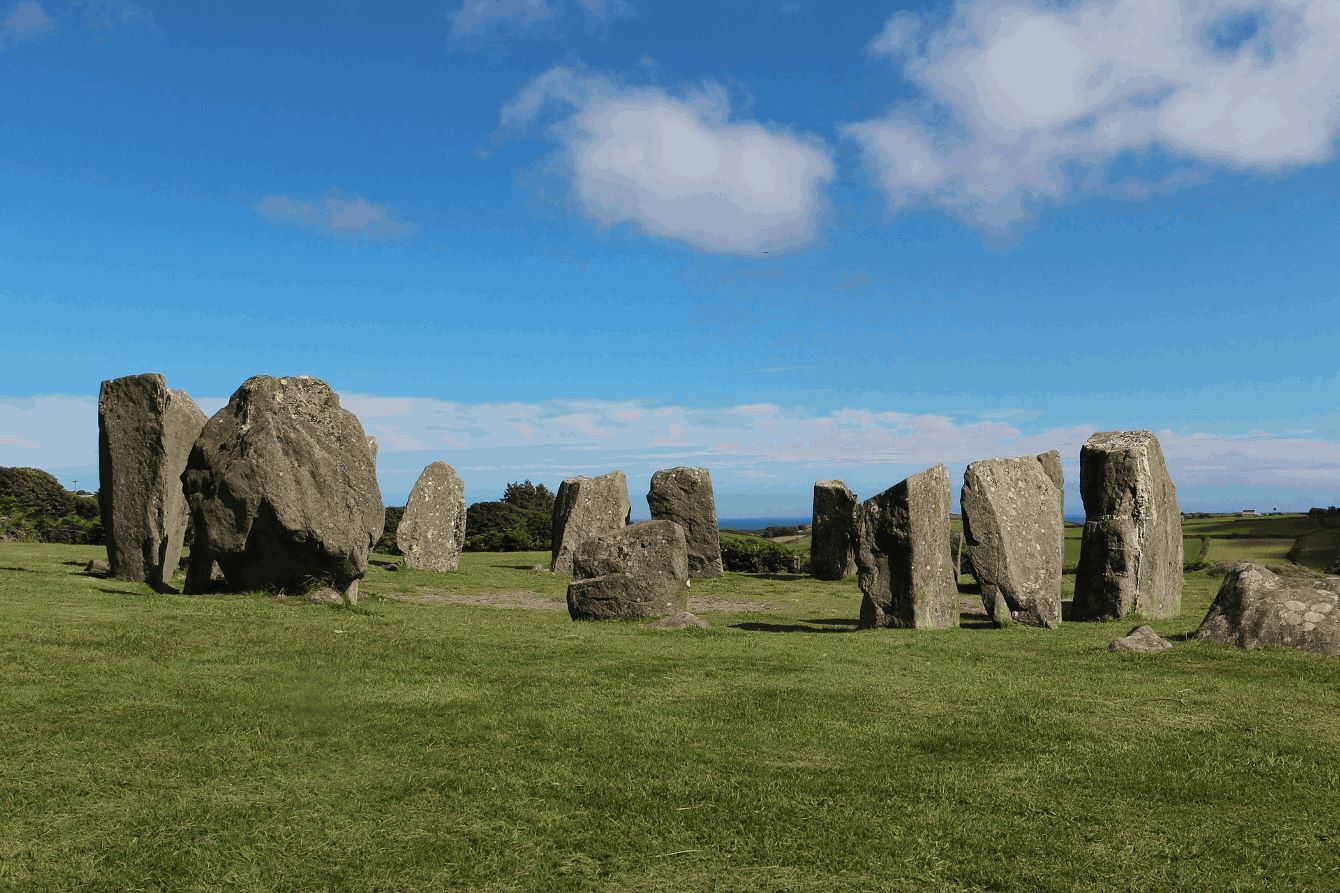 Stone circle, perhaps once used as a place of worship The instinctive reverence of the peasantry has hitherto been a great preservative; but the spread of education has to a considerable extent impaired this kindly sentiment, and the progress of scientific farming, and the anxiety of the Royal Irish Academy to collect antiquarian trifles, have already led to the reckless destruction of too many. I think that no one who reads the first two volumes of this history would greatly care to bear a hand in the destruction of that tomb at Tara, in which long since his people laid the bones of Cuculain; and I think, too, that they would not like to destroy any other monument of the same age, when they know that the history of its occupant and its own name are preserved in the ancient literature, and that they may one day learn all that is to be known concerning it. I am sure that if the case were put fairly to the Irish landlords and country gentlemen, they would neither inflict nor permit this outrage upon the antiquities of their country. The Irish country gentleman prides himself on his love of trees, and entertains a very wholesome contempt for the mercantile boor who, on purchasing an old place, chops down the best timber for the market. And yet a tree, though cut down, may be replaced. One elm tree is as good as another, and the thinned wood, by proper treatment, will be as dense as ever; but the ancient mound, once carted away, can never be replaced any more. When the study of the Irish literary records is revived, as it certainly will be revived, the old history of each of these raths and cromlechs will be brought again into the light, and one new interest of a beautiful and edifying nature attached to the landscape, and affecting wholly for good the minds of our people. 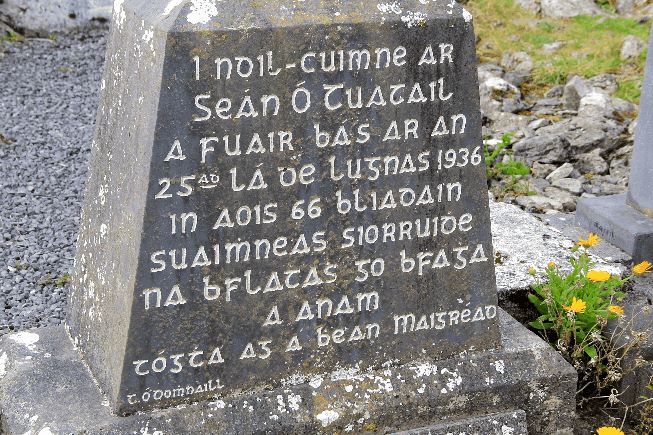 Stone with Celtic writing on it Irishmen are often taunted with the fact that their history is yet unwritten, but that the Irish, as a nation, have been careless of their past is refuted by the facts which I have mentioned. A people who alone in Europe preserved, not in dry chronicles alone, but illuminated and adorned with all that fancy could suggest in ballad, and tale, and rude epic, the history of the mound-raising period, are not justly liable to this taunt. Until very modern times, history was the one absorbing pursuit of the Irish secular intellect, the delight of the noble, and the solace of the vile. At present, indeed, the apathy on this subject is, I believe, without parallel in the world. It would seem as if the Irish, extreme in all things, at one time thought of nothing but their history, and, at another, thought of everything but it. Unlike those who write on other subjects, the author of a work on Irish history has to labour simultaneously at a two-fold task - he has to create the interest to which he intends to address himself. 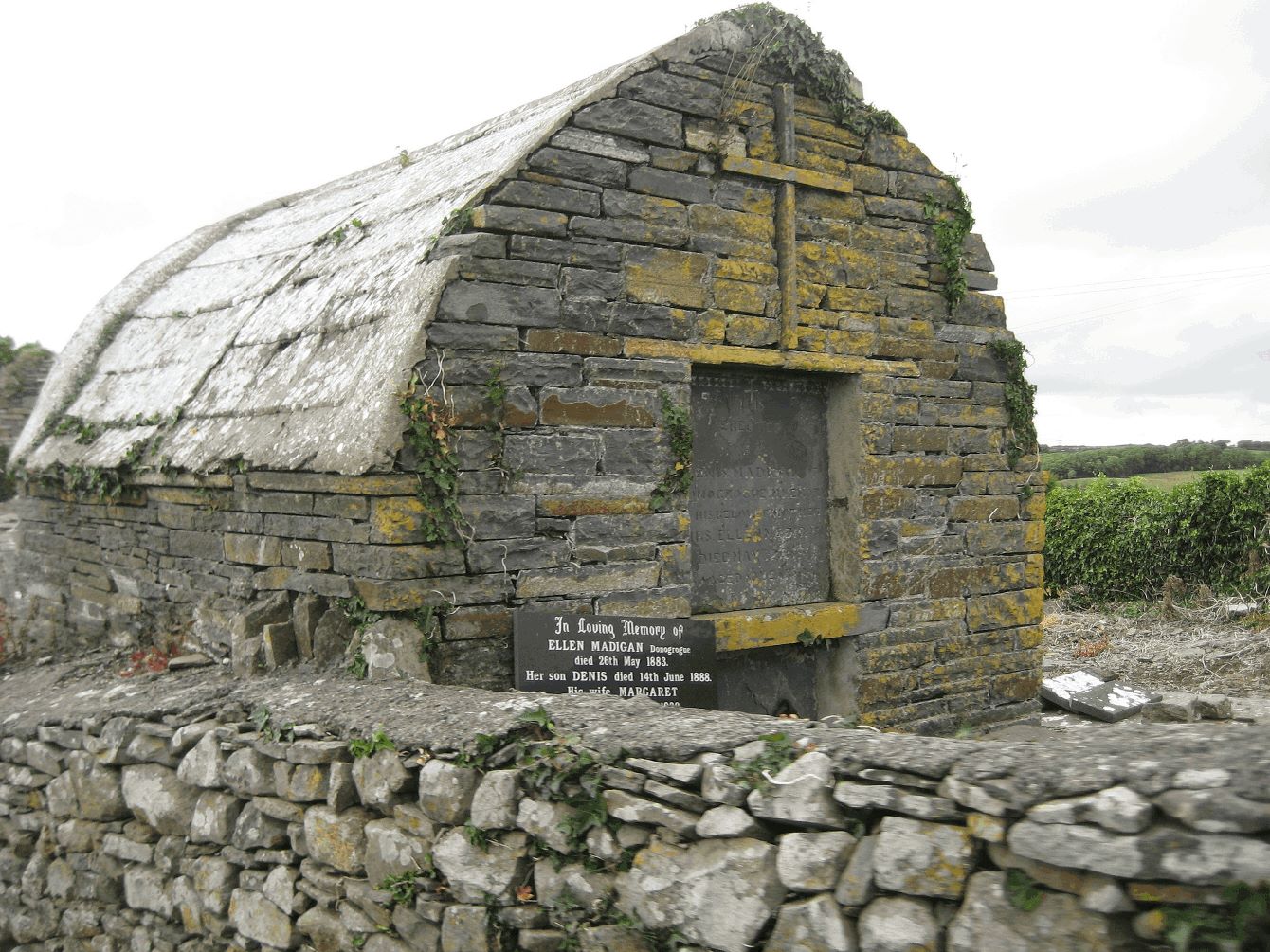 The ruins of an ancient sepulcher, or mausoleum, covered in moss The pre-Christian period of Irish history presents difficulties from which the corresponding period in the histories of other countries is free. The surrounding nations escape the difficulty by having nothing to record. The Irish historian is immersed in perplexity on account of the mass of material ready to his hand. The English have lost utterly all record of those centuries before which the Irish historian stands with dismay and hesitation, not through deficiency of materials, but through their excess. Had nought but the chronicles been preserved the task would have been simple. We would then have had merely to determine approximately the date of the introduction of letters, and allowing a margin on account of the bardic system and the commission of family and national history to the keeping of rhymed and alliterated verse, fix upon some reasonable point, and set down in order, the old successions of kings and the battles and other remarkable events. But in Irish history there remains, demanding treatment, that other immense mass of literature of an imaginative nature, illuminating with anecdote and tale the events and personages mentioned simply and without comment by the chronicler. It is this poetic literature which constitutes the stumbling-block, as it constitutes also the glory, of early Irish history, for it cannot be rejected and it cannot be retained. It cannot be rejected, because it contains historical matter which is consonant with and illuminates the dry lists of the chronologist, and it cannot be retained, for popular poetry is not history; and the task of distinguishing In such literature the fact from the fiction - where there is certainly fact and certainly fiction - is one of the most difficult to which the intellect can apply itself. That this difficulty has not been hitherto surmounted by Irish writers is no just reproach. For the last century, intellects of the highest attainments, trained and educated to the last degree, have been vainly endeavouring to solve a similar question in the far less copious and less varied heroic literature of Greece. Yet the labours of Wolfe, Grote, Mahaffy, Geddes, and Gladstone, have not been sufficient to set at rest the small question, whether it was one man or two or many who composed the Iliad and Odyssey, while the reality of the achievements of Achilles and even his existence might be denied or asserted by a scholar without general reproach. When this is the case with regard to the great heroes of the Iliad, I fancy it will be some time before the same problem will have been solved for the minor characters, and as it affects Thersites, or that eminent artist who dwelt at home in Hyla, being by far the most excellent of leather cutters. When, therefore, Greek still meets Greek in an interminable and apparently bloodless contest over the disputed body of the Iliad, and still no end appears, surely it would be madness for any one to sit down and gaily distinguish true from false in the immense and complex mass of the Irish bardic literature, having in his ears this century-lasting struggle over a single Greek poem and a single small phase of the pre-historic life of Hellas.  A panorama of the sea and the landscape leading to it In the Irish heroic literature, the presence or absence of the marvellous supplies no test whatsoever as to the general truth or falsehood of the tale in which they appear. The marvellous is supplied with greater abundance in the account of the battle of Clontarf, and the wars of the O'Briens with the Normans, than in the tale in which is described the foundation of Emain Macha by Kimbay. Exact-thinking, scientific France has not hesitated to paint the battles of Louis XIV. with similar hues; and England, though by no means fertile in angelic interpositions, delights to adorn the barren tracts of her more popular histories with apocryphal anecdotes. 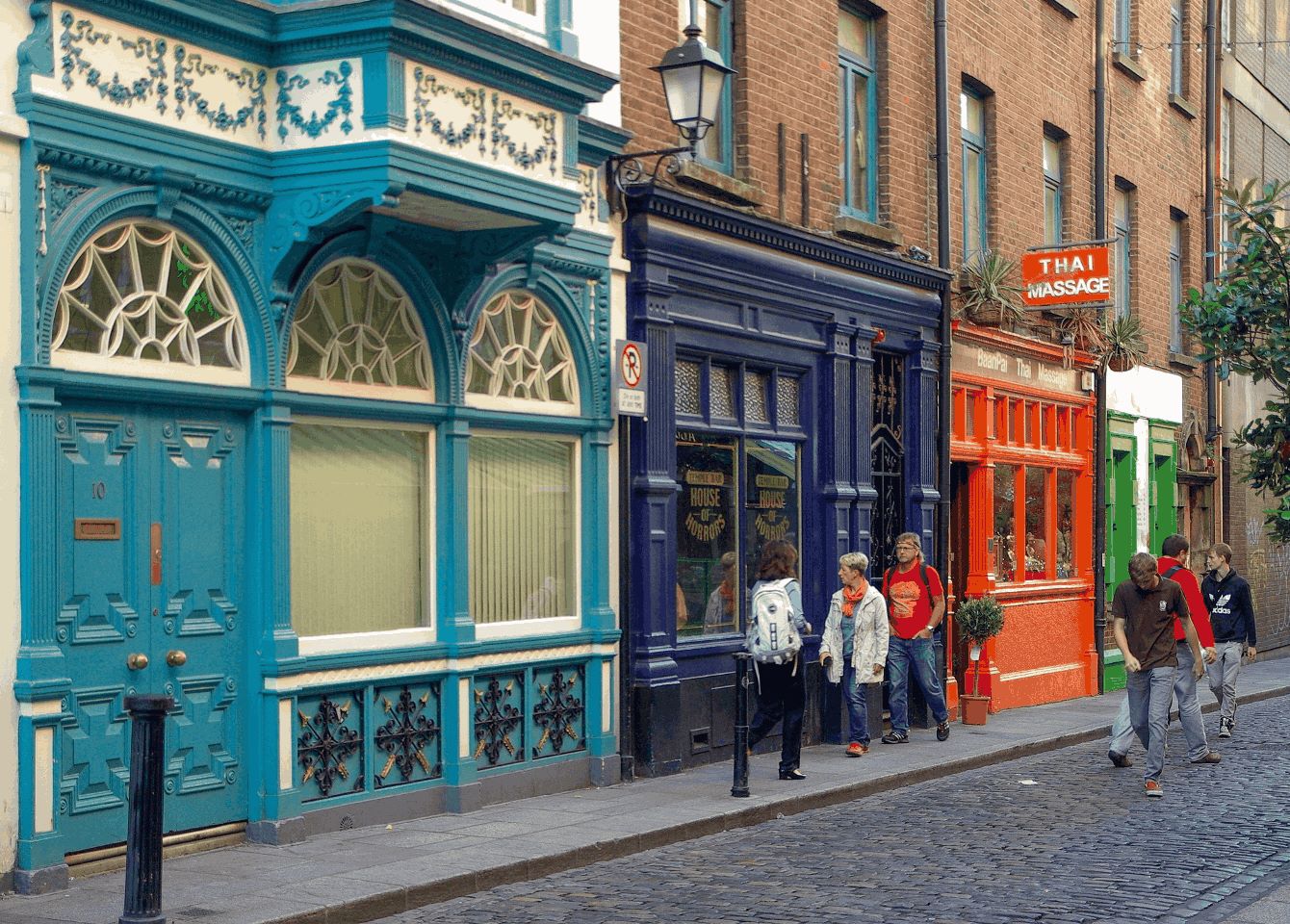 Not so ancient. A bar on the paved streets of Dublin How then should this heroic literature of Ireland be treated in connection with the history of the country? The true method would certainly be to print it exactly as it is without excision or condensation. Immense it is, and immense it must remain. No men living, and no men to live, will ever so exhaust the meaning of any single tale as to render its publication unnecessary for the study of others. The order adopted should be that which the bards themselves deter mined, any other would be premature, and I think no other will ever take its place. At the commencement should stand the passage from the Book of Invasions, describing the occupation of the isle by Queen Keasair and her companions, and along with it every discoverable tale or poem dealing with this event and those characters. After that, all that remains of the cycle of which Partholan was the protagonist. Thirdly, all that relates to Nemeth and his sons, their wars with curt Kical the bow-legged, and all that relates to the Fomoroh of the Nemedian epoch, then first moving dimly in the forefront of our history. After that, the great Fir-bolgic cycle, a cycle janus-faced, looking on one side to the mythological period and the wars of the gods, and on the other, to the heroic, and more particularly to the Ultonian cycle. In the next place, the immense mass of bardic literature which treats of the Irish gods who, having conquered the Fir-bolgs, like the Greek gods of the age of gold dwelt visibly in the island until the coming of the Clan Milith, out of Spain. In the sixth, the Milesian invasion, and every accessible statement concerning the sons and kindred of Milesius. In the seventh, the disconnected tales dealing with those local heroes whose history is not connected with the great cycles, but who in the fasti fill the spaces between the divine period and the heroic. In the eighth, the heroic cycles, the Ultonian, the Temairian, and the Fenian, and after these the historic tales that, without forming cycles, accompany the course of history down to the extinction of Irish independence, and the transference to aliens of all the great sources of authority in the island. |
| Revisited - Early Bardic Literature in Ireland | ||||
| Writer: | Standish O'Grady | |||
| Images: | ||||
| ||||
| Sources: | ||||
| ||||
All images are Copyright - CC BY-SA (Creative Commons Share Alike) by their respective owners, except for Petey, which is Public Domain (PD) or unless otherwise noted.
|
Looking for learning materials? Scriveremo Publishing, has lots of fun books and resource to help you learn a language. Click the link below to see our selection of books, availlable for over 30 langauges!
| |
comments powered by Disqus
